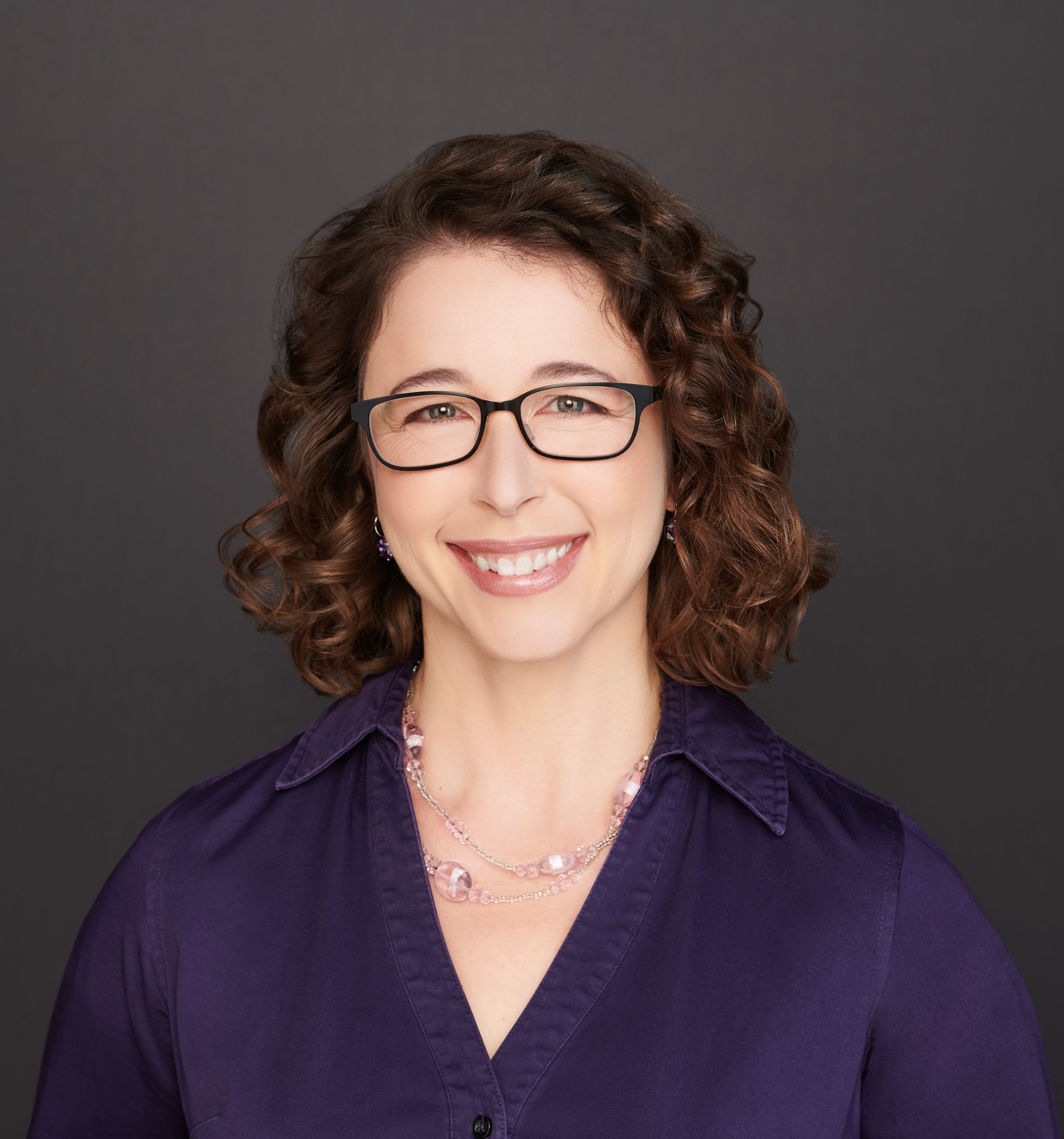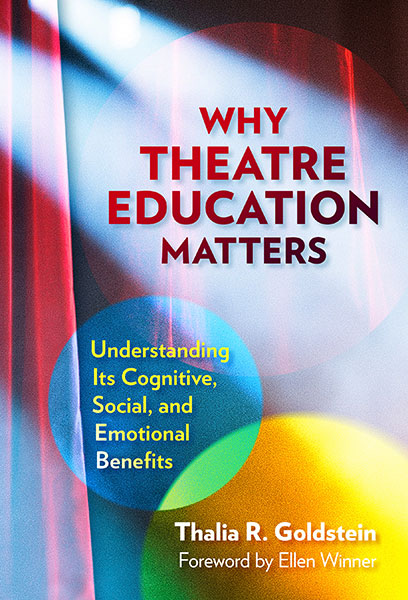By: Thalia R. Goldstein and Ellen Winner

 What follows is a June 21, 2024 conversation between Thalia R. Goldstein, associate professor and director of the Applied Developmental Psychology Program at George Mason University, and Ellen Winner, professor emerita of psychology at Boston College and a senior research associate at Project Zero, Harvard Graduate School of Education.
What follows is a June 21, 2024 conversation between Thalia R. Goldstein, associate professor and director of the Applied Developmental Psychology Program at George Mason University, and Ellen Winner, professor emerita of psychology at Boston College and a senior research associate at Project Zero, Harvard Graduate School of Education.
Winner is a coauthor of Studio Thinking 3: The Real Benefits of Visual Arts Education and Studio Thinking From the Start: The K–8 Art Educator’s Handbook. As part of the team that developed the Studio Thinking books, she helped introduce a framework that identifies eight habits of mind taught in visual arts.
Using the habits of mind framework as a point of departure, here the authors discuss Goldstein’s new book, Why Theatre Education Matters: Understanding its Cognitive, Social, and Emotional Benefits, and the benefits of arts education generally.
The conversation has been lightly edited and condensed for clarity.
Part 1 of 2: The Habits of Mind
Thalia Goldstein: Thank you so much for writing the wonderful foreword to my book Why Theatre Education Matters: Understanding Its Cognitive, Social and Emotional Benefits. I’m so happy to chat with you today.
Ellen Winner: It was a pleasure to write the foreword, and it’s always been a pleasure to work with you, Thalia.
TG: Thank you. I’m going to start with how you and your colleagues came to your Studio Habits of Mind framework. How did you transition from standardized and widely known outcomes, like IQ and SAT scores, into the Habits of Mind as a way of thinking about learning in the arts?
EW: My colleagues and I were skeptical of the claims if you study the arts writ broad, your IQ will go up, your SAT score will go up, your grades will go up, everything will be better. We decided to take a really close look at this, to look at art forms individually and outcomes individually.
We found kids who study a lot of arts and do better academically. But those were correlational studies. So we couldn’t say anything about causality. We don’t know whether the arts are making them good students, whether the fact they’re good students make them good at art, whether they come from families that believe in the arts as well as academics, or whether they just have high energy and they’re good at everything.
The experimental studies showed no relationship at all. We could not find an effect. Kids who studied the arts did not become better over time in math or reading compared to kids who didn’t study the arts.
“We decided we should figure out what the arts really teach.”
TG: So how did habits of mind then pop up as the thing you wanted to look at?
EW: People were really really angry at us. Not artists and not art teachers. They liked the findings, they said, thank God we don’t have to justify what we do in terms of things we can’t do, like make people’s SAT scores better. But people in the arts education policy and funding world were angry at us because they said we were going to destroy quality arts education for kids in this country by taking away the justification. I think it’s ridiculous to think our study could have such power. But we were shaken by how angry people were at us.
We decided we should figure out what the arts really do teach, because in the studies in our meta-analyses, there was no analysis of what kids were learning in the art form.
We picked visual arts because we had to start somewhere. So we said, let’s observe and figure out what kinds of skills kids are being taught. We didn’t start out with this idea of habits of mind at all.
We worked in 2 different schools, and we observed, interviewed, and videotaped a whole year. We spent another year looking at the videotapes, analyzing them, and trying to figure out what we were finding. And during that year we came up with “habits of mind.” What they’re being taught is to think in a certain way, we could call a disposition, we could call a habit of mind—it’s ways artists think.
And then we began to code for habits of mind. That’s how it all began.
TG: The term “habits of mind” existed already before the Studio Thinking projects. David Perkins and others had been writing about educational habits of mind before that. Was it through conversations with them, or reading, or did it become self-apparent . . . ?
EW: I don’t think we actually had conversations with David Perkins. But it was in our subconscious, it became clear these were ways of thinking students were being taught, and probably the term habits of mind came because this was in the educational era.
“What opportunities are students being given through theatre education? What are they being taught by teachers? What perspectives are the teachers taking?”
TG: Since I did my PhD in your lab, I was very aware of the Studio Thinking project and the Studio Habits of Mind, so when I started thinking about theatre and trying to do work on outcomes kids and adolescents experienced as a result of theatre, the Habits of Mind were already part of it. This idea of looking at what was actually happening in the theatre classroom was always in the back of my mind. But, as a PhD student, that’s a really big study to take on.
Then, in 2016 I went through every study I had ever done on the effects of acting and theatre, laying them all out on a big table to try and come to some grand conclusion about what we know theatre does across outcomes like empathy and emotion regulation.
And basically, my conclusion was: we’re kind of nowhere right now, because some studies show positive effects, some studies show negative effects, some studies show null effects. I realized the next thing to do was identify theatre’s habits of mind. The Studio Thinking books have become foundational to visual arts teaching in the United States. I figured it was time to do the same thing in theatre.
EW: Well, that makes a lot of sense, and I would love it if you would tell me a bit about what kind of habits of mind you discovered were being taught.
And I didn’t say being learned. I said “being taught” because I’m assuming you’re looking at what theatre teaches.
TG: Absolutely. I wanted to start from the same perspective the Studio Thinking books started from, which is: What opportunities are students being given through theatre education? What are they being taught by the teachers? What are the perspectives teachers are taking?
Body awareness and control: Paying attention to and knowing how to use your body. The body is the instrument of the actor in the way the violin is the instrument of the musician, the paintbrush the instrument of the painter.
Release inhibitions and be playful: Because acting requires you to do all sorts of silly and ridiculous things that are just not happening in the real world.
Imagine and envision: Actors have to go beyond the perceptual here and now and think about things like, how would I act if there was a door there, or how would I act if this person was really my mother.
Consider others: This is the one I think a lot of people point to. You have to be thinking about other people’s mental states, beliefs, desires, intentions. Actors have to do this for the characters they’re going to portray, the other people they’re on stage with, and the audience.
Collaborate: Nobody does theatre by themselves. You have to work with the director, scene designer, costumer, other actors on stage, in order to create together.
Then two I think of as closely paired: Be flexible and commit to choices. You have to be flexible because you try something, and it doesn’t work, you try something else, and then you try something else. And maybe that last one works.
That is paired with commit to choices, because if you try to perform multiple ideas simultaneously, you’ll fail. The audience won’t be able to understand what you’re doing. It’s too muddled. So you have to commit to a choice.
Finally, think metacognitively: Be open to critique and thinking about what you’re doing, what other people did, and whether or not it worked.
EW: So what evidence led you to posit these eight habits of mind?
TG: I went to five school districts. Public schools, private schools, magnet schools and conservatory schools, general education classrooms. Students were between 8th grade and 12th grade, across the United States. I stood in the corner with the video camera and then asked teachers questions about what they just did in the classroom.
I transcribed all the films and then conducted grounded theory qualitative analysis, where I read and watched, and had the list of different habits of mind, and started to think about well, what is the teacher trying to say here?
I started with the list of habits of mind from Studio Thinking. I then added work done in non-arts education, papers published on mathematical habits of mind, legal habits of mind, scientific habits of mind, and ensemble habits of mind, when students play music in a group.
Once I had decided on my Acting Habits of Mind, I did some reliability checking and validity checking, getting feedback. I had research assistants watch the films, to see how much agreement we came to. And I have since spoken to a wide range of actors and theatre educators from preschool up to professional Broadway actors, and I have yet to have somebody say to me, but what about this? But what about that?
EW: Validity, there.
“Good teachers have always been teaching these habits of mind.”
TG: One thing I found is the Acting Habits of Mind were not being taught in isolation. The last third of my book is about the complexity of an acting class: of using and integrating and working with all of these Habits of Mind simultaneously.
EW: Good teachers have always been teaching these habits of mind. So many teachers have said to us, “You’ve given us the language of what we were already doing, and it’s given us a language of justification.” But it’s also, I think, helped some of them to focus more clearly on developing these habits of mind. I think they occur together. They almost never occur in isolation.
You might think, craft—which is skill or technique—occurs in isolation. But it doesn’t. Because when students are learning one point or two point perspective, they’re also observing really carefully, and they’re probably envisioning. So they occur together in clusters, and they can flow one into another. So they should not be thought of as isolated.
TG: That’s something I’ve really been trying to think about in my own work, which is, teachers are setting students up to use these multiple Habits of Mind, and each exercise the teachers are giving the students is an opportunity.
In Part 2, the authors discuss the use of the Acting Habits of Mind, reactions from teachers, and the general defunding of arts education in the United States—check it out here!
 | Why Theatre Education MattersUnderstanding Its Cognitive, Social, and Emotional BenefitsThalia R. Goldstein |
Featured image by cottonbro studio

